|
0 Comments
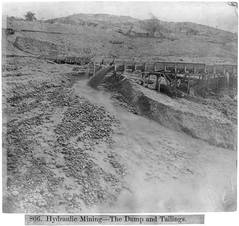 What if were to tell you that over 80% of the gold in the mother lode was still there? That the pivotal California Gold Rush barely scratched the surface of the state's wealth in gold? Would you believe it? It's true, the vast majority of the riches are buried right there in the sloping California goldfields, waiting. But why? Did the miners not know? Did gold lose its value? Neither, the miners were vastly aware of where the gold lay and the price per ounce of gold is 50 times higher than it was during the gold rush. So what happened? Hydraulic mining was in full swing. Monitors (water cannons) blasted away at hillsides 24 hours a day, pumping tens of millions of gallons of water, eroding and setting loose the precious gold. Down the gold ran tumbling with mud, gravel, and other debris. It passed through long sluices catching the heavy gold flakes along the riffles and letting the sludge pass through. Tens of thousands of tons of gravel and mud poured daily out of the Sierra foothills and settled in the rivers below. Flooded, choked, swollen. These were the terms that described the rivers and valleys of California as hydraulic mining took siege on the lowlands of the Sacramento Valley. City streets lay in ruins, farmlands encrusted with mud, and the San Francisco bay turned brown the year round. Tensions started to grow between the farmers of the valley and the miners of the foothills. Levees and damns were built, but burst, and so did the tempers of the people, finally leading to the landmark case of Edwards Woodruff v. North Bloomfield Mining and Gravel Company. 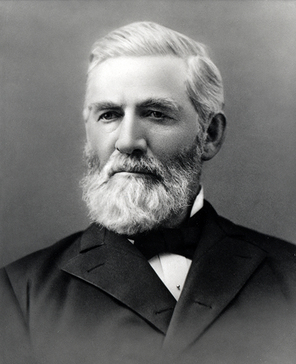 The case made its way up to the United States District Court in San Francisco and judge Lorenzo Sawyer. What he discovered was that thousands of acres of farmlands were flooded and towns like Marysville and Yuba City were under 25 feet of mud. He found numerous shipping lanes closed do to the impassibility of sludge choked rivers. So in 1884, a mere 31 years after the invention of hydraulic mining, judge Sawyer made his decision and ruled in favor of the farmers. The Sawyer Decision, as it is known, was 225 pages long and took nearly two hours to read, the final blow was stated thus, "All tailings must stop." While some mines continued to operate illegally or under heavy fines, the damage was done, and even these unlawful undertakings dwindled and diminished by the 1900's. More than merely ending the era of the gold mining in California the Sawyer Decision had made a statement to protect agriculture, environment and the public interest. The ruling paved the way for the dominance of the rich agricultural economy of California today. It is also seen by many as the first environmental case in the United States protecting the interest of public lands over the rights of private financial interests, by acknowledging the value and effects of changing the environment. These legal effects are not the only major changes that often go unrecognized during talk of the gold rush - check back into our next blog to learn about the all too often forgotten effects on the American Indians of the area. 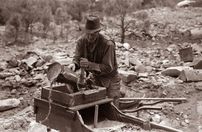 By 1853 placer mining had recovered over 10 million ounces of gold worth roughly $200 million, but this was only the start. The immediate financial boom of the gold rush caused the continued expansion in terms of both population and technological advance. With gold becoming harder and harder to come by and miners pouring in from across the globe at an increased rate with the completion of the Panama Rail Road connecting the east and west coasts of the Americas in 1855 the need to devise new methods of gold extraction were ripe, and both miners and companies were ready to pick the shiny fruit. Perhaps more than the value of gold itself the ingenuity of the miners and the engineering advances made during the gold rush provided its most dynamic worth. For the first year or so a gold pan and a keen eye were all that was necessary to come by nearly an once of gold per day. Claims along numerous rivers and creeks throughout the gold region yielded multiple flakes in every pan. Once this gold was gone the industrialization of gold mining was ready to begin. It started small with single miners or small groups utilizing sluices, long toms, and "rocker boxes" - a device where gravel was poured through a sieve allowing only smaller materials to fall onto a 'baffle' (a sheet often made of canvas that would sag and allow small flakes to settle) and finally run down a small 'sluice' (a wooden funnel with bars to catch the gold). This entire contraption was placed on a set of rockers to rock the device back and forth while water was poured through it in order to settle the heavier gold. Soon even these methods became obsolete and the introduction of hard rock gold mining spread through the California goldfields. Initially the process was a grueling endeavor using black powder and hand powered tools to crush the extremely resistant host rock quartz into a fine powder. The entire process may have gone under if it hadn't been for the introduction of steam powered drills and invention of dynamite in 1867. With these two forces hard rock mining became a calling card of the gold rush. Mines like the Kennedy Mine dug over a mile a deep, and the total gold production from hard rock mining accounted for close to %60 of the total gold rush yield. This method of crushing ore still encountered the problem of extraction and the solution to this problem would be one of the later downfalls of the gold rush. Quicksilver (mercury) was used to form an amalgam which was extracted and heated to finally isolate the gold. The release of mercury into the environment had consequences Californians are still dealing with today. 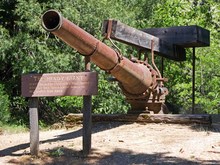 Quicksilver wasn't the only downfall to the gold rush, equally devastating, if not more so, was the the process of hydraulic mining. Similar to the transition to hard rock mining, miners realized that the majority of gold was still held buried in the hills and it would take little less than an avalanche to set it free. Hydraulic mining, invented in 1853 by three miners; Eli Miller, Edward Matteson, and Anthony Chabot (also famous for his engineering work in the bay area) would soon create that man made avalanche. Hydraulicking, as it was called, forced pressured water out of a nozzle at an extreme force, blasting the hillside into sludge. The tailings (runoff) were passed through long sluices to settle the gold. Once settled the final process also utilized quicksilver for its extraction process. The state's largest hydraulic mine, the Malakoff Mine, located in the foothills of Grass Valley utilized 40 miles of pen-stocks (pipes) dropping 1000 ft in elevation creating a jet stream of water shot out of the monitor (water cannon) at 500psi. This devastating blasting carved out a pit over one mile long, over half a mile wide, and 600 ft deep. It removed 41 million cubic yards of earth and garnered $3.5 million dollars worth of gold alone (the modern day equivalent of over $251 million). The mine, run by the North Bloomfield Mining and Gravel Company, operated around the clock causing need for the installation of the first ever long distance phone line in 1878 and electric lights in 1880. To process the giant quantities of gravel the company also constructed a 7,800ft drain tunnel out of solid bedrock, an engineering feat that took almost two years of day and night work to complete. The very same power that brought gold mining in California to the forefront of engineering and profits also led to its rapid demise. The tailings produced by hydraulic mining and the release of mercury brought ruin and court cases to the state of California waging a war between the miners, farmers, and environmentalists that would shape California legislature and end put a final end to the gold rush era. Check back to our blog again for the downfall of the gold rush.
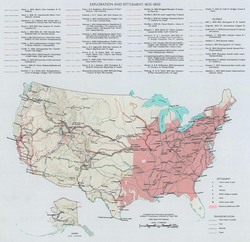 Various routes taken to San Francisco across the U.S. Various routes taken to San Francisco across the U.S. Just how grand was the California Gold Rush? Lets consider the city of San Francisco, which ballooned from 1,000 to 25,000 by the end of 1849 alone. It wasn't just sheer numbers that made the gold rush so impactful however, it was its reach on the entire globe that set it apart. Miners and businessmen alike gathered from the far corners of the globe; from China to Australia to Brazil. No distance was too great an undertaking for the promise of riches the goldfields could provide. It was not an easy journey but claims of gold nuggets and the opportunity to make money off the miners brought forth a diverse group of motivated individuals that would shape the character and diversity of the newly formed state. Who were these individuals that flocked to California? They were primarily men, especially at first. They were merchants, craftsmen, and laborers. Bakers, sailors, and medics. All brought together by a shared dream of finding wealth in the California goldfields. The early rush of 1848 featured mostly miners from the Oregon area and the nearer parts of Latin America. As time progressed new inhabitants started flocking from all parts of America, all the way across from the East Coast. These individuals had to partake in a treacherous six month journey over land or by sea around the tip of South America. Many fell ill and died along the way. The travelers hardy or lucky enough to survive were joined by fortune seekers from virtually ever continent on the globe. The Chinese in particular made the long ocean passage in tremendous numbers. Of the nearly 300,000 individuals that made the journey for California's gold during the peak influx, 1848-1855, over 25,000 were Chinese. 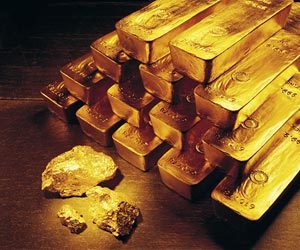 To give a glimpse to the power of the draw the gold rush had on these Argonauts (a term given to the miners), lets take a moment to analyze the type of wealth that was possible to be gained. For the early miners, at a time in America when an average days labor of 12 hours garnered about $1.00, the goldfields were a destination too good to be true. In the same amount of time the average miner could earn $16.00. If we transpose that into today's market for California where minimum wage stands at $10.00 an hour and the average work week sits at 40 hours, multiply that by 52 weeks a year and a 1,600% increase and we get $332,800 a year (before taxes ;)). Not too shabby for a minimum wage job eh? Any takers? It is not hard to see why the gold rush was so enticing. Only hard work and dedication were required to make a hefty sum. The reality of the riches found by those early miners and their 300,000 followers quickly met the reality that the easy to grab gold was soon gone. By 1850 the average miner could earn only roughly $2.00 a day. The decreasing accessibility of gold led the miners to discover new ways of extracting it. The gold was still there it was just finer and trapped inside the hills. For more on the ingenuity of the miners and the technological advances brought on by the gold rush check back into our future blog. 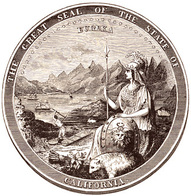 The statehood and development of California is forever linked with its famous gold rush. Its incorporation as a state is as rocky a history as the gravel beds of the goldfields themselves. The state's quick and often disputed succession from one nation to another mirrored the rapid and often lawless settlement of the gold country. Prior to the westerner's discovery of gold California was a territory of Mexico and before it Spain. The year gold was discovered, 1848, marked the same year that ended the Mexican-American War, a mere 27 years after Mexico's fight for independence from Spain. The change to a newly formed Mexican government in 1821 led to instability throughout Mexico and especially its northern reaches such as Texas and Alta California. This instability and the continued American expansion of Manifest Destiny led to conflict and the 1836 Texas Revolution. For the next decade the political sovereignty of Texas was under extreme debate between Mexico and the U.S. The non-compromised annexation of 1845 incorporated Texas as an official U.S. state and prompted open war between the two countries. The American victory in 1848 resulted in the treaty of Guadalupe Hidalgo and a large land acquisition including Alta California. The result of this messy transfer was a largely lawless area where much of the goldfields themselves were outside established land grants and deemed public land. As neither an official territory or state and under minimal military control California was ripe for the taking. These conditions aided the gold rush fever, a chance to stake one's own claim at no cost and strike it rich was motivation enough to bring nearly 100,000 souls to California in 1849. Unsurprisingly many disputes over claims arose, and with no governmental body yet in place many matters were handled privately and violently, giving the gold rush its often perceived wild west feel.
The lack of government enforcement, the rapidly increasing number of miners, and the seemingly unbridled economic gain forced the United States into quick action and to forego the usual process of new land first becoming a formal territory. Instead, on September 9th 1850 California was granted full statehood becoming the 31st state of the union. Along with its initial incorporation much of its settlement and character was to be equally influenced by the continuing, and now officially, California Gold Rush. California's Gold Rush hardly seems a fitting history to tell unless we start from the beginning, when the gold itself rushed in to California. The term rushed is used rather loosely here to describe a time frame of some 400 million years. A number that plays a wonderful juxtaposition to the frantic pace of Marshall finding gold in 1848 to the Sawyer court decision ending hydraulic mining tailings (legally) in 1884. Beginning roughly 400 million years ago and for over 200 million years much of California was being formed. Plate tectonics were slowly spreading the ocean floor until it subducted (sank) below the continent of North America. During this process parts of the ocean floor, some carrying gold placed by underwater volcanism, accreted (accumulated) onto the North American landmass. Around 160 million years ago the docking of Smartville, a gold rich island arc, created much of what is today know as California's Mother Lode. 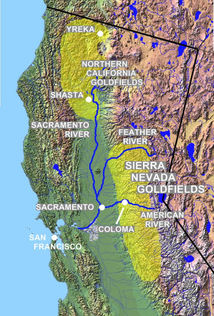 Not long after, a mere 20 million years, an event known as the Nevadan Orogeny (a term for mountain building) over a span of 40 million years created and pushed up the Sierra Nevada Batholith (a giant complex of granite), and with it veins of quartz and gold. Then the mountains began to erode, and for up to 80 million years the gold was slowly concentrated and deposited downstream in gravel beds along the Sierra foothills. These ancient gravel beds richly laced with gold, were then cut into by modern rivers such as the American and Feather exposing the gold for the North American settlers to discover. It is this unique geologic history that made the Gold Rush possible. Most of our planet does not contain the quantity of highly consolidated gold that made California the hot spot it became. These gold rich gravel beds are responsible not only for the influx of people to the California coastline but also for a host of breakthroughs in technology engineered for the specific needs of extracting the gold from the often hard to reach places. Check back again for more on the people and technological advances of the California Gold Rush. No I'm not talking about Joe Montana and Jerry Rice. I'm talking about the men and women of the California Gold Rush. One of the most important time periods in shaping California's history, and the namesake of that fabled San Francisco 49ers football franchise. But beyond mere fable, what are the facts? What really happened? The full story of California's Gold Rush history. Many of us remember from our grade school encounter with California history that James Marshall discovered gold at Sutter's Mill, and that his discovery turned into a frenzied westward dash for gold and glory in 1849, bestowing the name 49ers upon those early miners. Yet how many of us recall that Marshall actually found gold in the beginning of 1848 when 'Alta California' was still a Mexican Territory? There is so much more to the story of California and its Gold Rush than most of us remember, and many of the details and developments are lost to our memory; where did the miners come from? Where did they go? Who really struck it rich? What are the lasting effects? What about the women, natives, and foreigners? And many other details as important as the veins of gold running through the Sierra Nevada goldfields.
If you are interested in gritty details and full fledged history, check back to our blog over the coming weeks and discover some of the forgotten treasures of the California Gold Rush.  For those of you who aren't aware, this week April 19th-25th, is Earth Week. The week is centered around Earth Day, Wednesday the 22nd. The day aims to increase awareness about environmental protection and has been celebrated for over 40 years and now in as many as 192 countries world wide. FIELDGUIDES is happy to announce that in celebration of the ideas behind earth week we held our first ever Earth Day themed free day program. We took 47 students and 18 parents and teachers to Pescadero State Beach and Marsh to explore the wetlands and learn about conservation and stewardship. Fieldguides imparted ideas about protecting the planet and the delicate marshland ecosystem by learning about and using the Ohlone Indians who lived in the area as examples of excellent stewards. All participants also took part in a watershed cleaning, collecting waste throughout the marsh, on the beach, and even in the parking lot. We want to thank all 140 hand (5 fieldguides included), for helping clean up the earth, and hope that the program can help foster a sense of stewardship in all its participants. It is up to us after all to protect this amazing planet we call home. We leave you with the poem by Abhay Kumar, an Indian poet-diplomat often chosen to represent Earth Day: Our cosmic oasis, cosmic blue pearl
the most beautiful planet in the universe all the continents and the oceans of the world united we stand as flora and fauna united we stand as species of one earth black, brown, white, different colours we are humans, the earth is our home. Our cosmic oasis, cosmic blue pearl the most beautiful planet in the universe all the people and the nations of the world all for one and one for all united we unfurl the blue marble flag black, brown, white, different colours we are humans, the earth is our home.  Many of us are familiar with the classic children's book Where the Wild Things are by Maurice Sendak, where our hero Max sails to an unconquered jungle, encounters wild beasts, and makes it home in time for supper. This type of foray into the wild has long captured many an author's as well as reader's mind, both young and old. How many of us have dreamt of adventure in the great unknown forests of the world? Only there is one major problem with this dream; these forests no longer exist in our world today. There was a time in human history (not so long ago) that these forests really did exist. The vast Amazon and Congo basins, even the British countryside, which inspired J.R.R. Tolkien to create magical forests where trees could talk and move. And why not? Couldn't these magical places exist? Not perhaps Tolkien's ents, but a place so strong and wild, like in Conrad's Heart of Darkness, that humans could not grasp its power and meaning. Thanks to those authors most of us can still imagine a truly wild place. Modern geography; however, does not provide such a pleasant reality. Deforestation has claimed much of the world's wildest places. Notably it has split them apart. Recent studies by North Carolina State University show that 70% of remaining forest is within 1km (.6mi) of the forest's edge. That doesn't leave much room for the wild things. 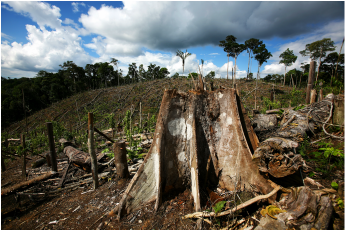 Deforestation to create farmlands, oil wells, and endless roads has fragmented the world's forests destroying our now fabled wild places and wreaking havoc on forest biodiversity. Forest fragmentation is seen to reduce biodiversity by 75% as species struggle to survive at the brighter, hotter, and windier forest edges. The closer edges also allow for foreign species to penetrate and disrupt the fragile forest ecosystem. Human hunting being perhaps the largest impact on the system as humans take out much of the larger game. This reduction in top of the chain predators has immense effect on the entire ecosystem as we have seen from studies like that of the wolves in Yellowstone National Park, as well as others. There is no easy answer. Rapid human population growth demands large amounts of food and energy that are often supplied through deforestation. Still all hope is not lost; being aware of where your food comes from as well as embracing renewable energy sources can help. As can supporting companies who work to protect the world's forests. Every little bit matters; because it's about more than the loss of large carbon rich trees, and the destruction of unique habitat, it's about our imagination and our ability to believe in a place where the wild things are. For a more complete understanding check out the article from The Conversation for information, graphs, and links to further statistics and researtch about forest fragmentation. 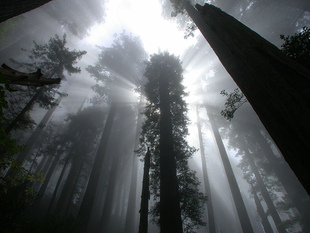 Huddle, gather round, circle up! It's time we had a little talk about fog. I know for many a coastal Californian it is not a pleasant subject. In fact it is often a quick recipe for a ruined day at the beach; take one day off, a pair of sandals, a touch of sunscreen, and...sit there in a freezing fog bank. Despite its cool demeanor, and habit of harshing a surfer's mellow, fog is an essential ingredient in one of California's defining features of grandeur and beauty. Enter Sequoia Sempervirens, the redwood. These breathtaking beauties, known for their enormity of both size and age, not to mention beauty, are found in limited areas primarily in coastal California, and it is no secret why. Fog! Giant trees such as these, including the world's tallest living tree Hyperion, need a whole lot of water to survive and thrive. Fog creates the unique climate necessary for redwood survival. It is involved in two different functions that provide redwoods with ample water. The first is the coalescence of fog water droplets on the redwood branches allowing the redwood to essentially rain upon itself even when no actual rain is falling. The second is the absorption of water through epidermal tissue on the tree leaves. This second process is necessary because of the great height of the redwood, which becomes so tall that it can no longer bring water from the roots all the way to the top of the tree. This means redwoods can only obtain their record setting height in foggy areas. So next time the fog rolls in, instead of lamenting on the loss of a beach day, make your way into the enchanted forests and huddle up with a redwood family circle. |
